

EXPLORE BY TOPIC:
  Our top 10 resources
Our top 10 resources
  Childhood / Early Life
Childhood / Early Life
  Chronic Stress
Chronic Stress
  Education
Education
  Food Security
Food Security
  Genetics
Genetics
  Jobs & Work
Jobs & Work
  Housing / Neighborhoods
Housing / Neighborhoods
  Income & Wealth
Income & Wealth
  Race / Racism
Race / Racism
  Social Inclusion
Social Inclusion
  Policy & Change
Policy & Change





Buy the DVD
e-Newsletter
FAQs
Contact Us
Site Map
Home

|
 |


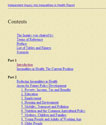 1998 Independent Inquiry into Inequalities in Health (aka Acheson Report) 1998 Independent Inquiry into Inequalities in Health (aka Acheson Report) 
REPORT In the United Kingdom, the 1998 Independent Inquiry into Inequalities in Health Report (otherwise known as the Acheson Report) concluded with 39 policy recommendations to improve health. sisli escort taksim escort istanbul escort maltepe escort sisli escort |
 |
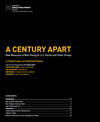 A Century Apart: New Measures of Well-Being for U.S. Racial and Ethnic Groups A Century Apart: New Measures of Well-Being for U.S. Racial and Ethnic Groups 
Kristen Lewis and Sarah Burd-Sharps Our national conversation about race tends to take place in black and white— understandably, given the long shadow cast by America’s history of slavery and segregation. Yet the greatest disparities in human well-being to be found in our multiethnic society are not between African Americans and whites, but rather between Asian Americans in one state and Native Americans in another. This new study builds on the methodology introduced in The Measure of America: American Human Development Report 2008-2009 (Columbia University Press, 2008), which uses a composite index to rank the well-being of people by state and congressional district. The 2008-2009 report included HD Index rankings for racial and ethnic groups at the national level.1 The current analysis drills down to assess disparities by race and ethnicity within each state. |
 |
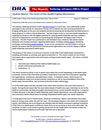 A Disparity Reducing Advances Project State of the Health Equity Movement Memo 09‐02 A Disparity Reducing Advances Project State of the Health Equity Movement Memo 09‐02 
The Disparity Reducing Advances Project (the DRA Project) is a multi-year, multi-stakeholder project developed by the Institute for Alternative Futures (IAF) to identify the most promising advances for bringing health gains to the poor and underserved and accelerating the development and deployment of these advances in order to reduce disparities. The purpose of this memo is to serve as a resource on the state of the health equity movement by compiling information on activities and reports around the U.S. This memo should be used as a way to quickly learn about the current happenings in the health equity movement, and all of the information provided is hyperlinked to provide more information regarding the organizations, conferences, and publications noted.fausse sacoche de luxe |
 |
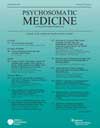 A Longitudinal Study of Job Strain and Ambulatory Blood Pressure: Results From a Three-Year Follow-up A Longitudinal Study of Job Strain and Ambulatory Blood Pressure: Results From a Three-Year Follow-up 
SCHOLARLY ARTICLE, Schnall et al, 1998 This follow-up study to "Relation Between Job Strain, Alcohol, and Ambulatory Blood Pressure" (Schnall, et al, 1992) replicates the results of the original, providing further evidence that job strain is an occupational hazard in the etiology of hypertension. |
 |
 A Place for Healthier Living: Improving Access to Physical Activity and Healthy Foods A Place for Healthier Living: Improving Access to Physical Activity and Healthy Foods 
REPORT from the Joint Center for Political and Economic Studies and PolicyLink, June 2004 There are significant, persistent disparities in the prevalence and consequences of chronic illnesses: disparities of race, ethnicity, and income that are linked not just to nutrition and physical activity directly, but also to the social, economic and community-level conditions in which people live. These conditions largely shape people's capacity to maintain a good diet and a life that includes healthful physical activity. While individual behavior and access to quality health services are key, these disparities will not be eliminated without addressing community conditions. This brief explains the importance of community and neighborhood to the obesity epidemic, and proposes solutions.
|
 |
 Action on the Social Determinants of Health: Learning from previous experiences Action on the Social Determinants of Health: Learning from previous experiences 
REPORT from the Secretariat of the WHO Commission on the Social Determinants of Health, March 2005 A background paper prepared for the first meeting of the Commission, with 20 pages of history of different understandings of health over the past century, and international trends and movements in recent decades to incorporate social concerns into public health policy and interventions. The report also contains about 10 pages on the aims and objective of the Commission itself. |
 |
 Addressing Poverty in TB Control: Options for National TB Control Programmes Addressing Poverty in TB Control: Options for National TB Control Programmes 
REPORT from the World Health Organization, 2005 WHO's commitment to the promotion of equity and pro-poor policies in its disease prevention and control activities is based on the recognition of poverty as a major barrier to health and health care. In the case of tuberculosis (TB), the links between poverty and disease burden have been documented for many years. This document addresses the integration of national TB control programmes on the practical issues involved and options for action. |
 |
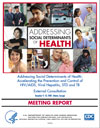 Addressing Social Determinants of Health: Accelerating the Prevention and Control of HIV/AIDS, Viral Hepatitis, STD, and TB, External Consultation (pdf) Addressing Social Determinants of Health: Accelerating the Prevention and Control of HIV/AIDS, Viral Hepatitis, STD, and TB, External Consultation (pdf) 
REPORT from the CDC National Center for HIV/AIDS, Viral Hepatitis, STD, and TB Prevention This report presents a summary of an external consultation on social determinants of health. The report presents the consultants' suggested top priorities for the Center, as well as information about partnerships and resources required to implement these priorities.
The CDC has also launched a Web site to provide links to SDH resources both within and outside the organization: www.cdc.gov/socialdeterminants.
|
 |
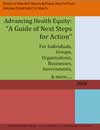 Advancing Health Equity: A Guide of Next Steps for Action (pdf) Advancing Health Equity: A Guide of Next Steps for Action (pdf) 
REPORT, Virginia Department of Health, 2008
The Office of Minority Health and Public Health Policy released this report compiling ideas for health equity promotion generated during statewide community screenings of UNNATURAL CAUSES. Their site also contains resources for promoting public awareness about health inequities.
|
 |
 Allostatic Load and Allostasis Allostatic Load and Allostasis 
ARTICLE from the MacArthur Research Network on SES and Health An overview of the science behind chronic stress's effects on the body. |
 |
 American Dream a Nightmare for Many Blacks: study American Dream a Nightmare for Many Blacks: study 
NEWS ARTICLE, Reuters, November 13, 2007 "Black Americans are failing to climb the social ladder, while a worrying number born into the middle classes are now actually poorer than their parents, according to a study released on Tuesday. The report by Brookings Institution scholar Julia Isaacs found blacks were missing out on a cherished American dream that their children will be economically better off...." |
 |
 An Economic Quandary An Economic Quandary 
NEWS ARTICLE by Christopher Leonard, Arkansas Democrat-Gazette,
Part of the series "Leaving the Islands," an exploration of Marshallese migration to Arkansas, this article provides background on the nation's economic replica uhren deutschland legal situation and the choices, or lack thereof, faced by its residents. The article does not draw linkages to health. |
 |
 Arizona Water Settlements Act 2004 Arizona Water Settlements Act 2004 
LEGISLATION from The Library of Congress Information about, and the full text of the legislation (S.437) that restored water rights to the Pima-Maricopa tribes, as highlighted in Episode 4 of UNNATURAL CAUSES, Bad Sugar. |
 |
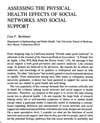 Assessing the Physical Health Effects of Social Networks and Social Support Assessing the Physical Health Effects of Social Networks and Social Support 
SCHOLARLY ARTICLE by Lisa Berkman, Review of Public Health, May 1984 In this review of data from the previous decade relating social ties to physical health, Berkman considers 1) what are the functions of social networks and social support, and what do they provide for people, and 2) what are the potential biologic pathways that link social networks to morbidity and mortality. This is a follow-up article to Berkman and Leonard Syme’s original study of Alameda County residents published in the American Journal of Epidemiology in 1979.
This article is only available online through purchase or subscription. |
 |
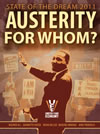 Austerity for Whom? Austerity for Whom? 
United for a Fair Economy The latest report in United for a Fair Economy's State of the Dream series, "Austerity for Whom?," surveys the impacts of a tax-cutting, government-shrinking economic agenda – as replica orologi di lusso prescribed by Republican leadership with Tea Party allies – on communities of color.
We find that if such an agenda advances, the dream of a racially equal society, as described by Dr. Martin Luther King, Jr. over forty years ago, will be pushed even further out of reach. |
 |
 Barriers to Health Services Perceived by Marshallese Immigrants Barriers to Health Services Perceived by Marshallese Immigrants 
SCHOLARLY ARTICLE by Deanna Perez Williams and Ann Hampton, Journal of Immigrant and Minority Health, 2005 The Marshallese immigrant population, part of a growing Asian American and Pacific Islander population in the United States, has adverse health conditions and disparities that are mainly attributed to their pre-migration health status. Little is known about the perceived and real barriers Marshallese experience in accessing and utilizing health services in the United States, but their health status is known to exacerbate. This study used an ethnographic approach to identify the rolex kopia ethnocultural and socioeconomic barriers to existing health services as perceived by immigrant Marshallese living in Northwest Arkansas. Recommendations are made to improve timely, culturally competent, and appropriate health services.
Purchase required to view full text |
 |
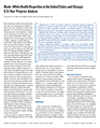 Black-White Health Disparities in the United States and Chicago: A 15-Year Progress Analysis Black-White Health Disparities in the United States and Chicago: A 15-Year Progress Analysis 
American Journal of Public Health Progress towards meeting the Healthy People 2000 and Healthy People 2010 goals of eliminating health inequities remain bleak. Health gaps between black and white people widened nationally for 6 of 15 audemars piguet replica measures and in Chicago for 11 of 15 measures between 1990 and 2005, according to a study published in the American Journal of Public Health. |
 |
 Blood Pressure Changes in Men Undergoing Job Loss: A Preliminary Report Blood Pressure Changes in Men Undergoing Job Loss: A Preliminary Report 
SCHOLARLY ARTICLE by Kasl and Cobb, Psychosomatic Medicine, 1974 A seminal study providing strong evidence that even anticipation of job loss raises blood pressure. The study also finds that blood pressure is increases in men during unemployment, especially for those with more general stress and longer periods of unemployment. The findings were subsequently reinforced by later studies. |
 |
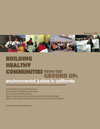 Building Healthy Communities from the Ground Up: Environmental Justice in California (pdf) Building Healthy Communities from the Ground Up: Environmental Justice in California (pdf) 
REPORT by the Asian Pacic Environmental Network et al., September 2003 A report on the landscape of statewide conditions as well as opportunities and challenges for building grassroots power and influence at the state level, using the framework of social justice. The report is designed to inform legislators and policymakers of the history of neglect and inadequate enforcement of environmental protections in California, and to identify policy, legislative, program, and investment gaps, and as a reference document to support direct organizing efforts and coalition-building. The reports contains recommendations and strategies for improving environmental justice in the state.
allreplica.net
uomega.com |
 |
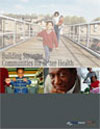 Building Stronger Communities for Better Health Building Stronger Communities for Better Health 
REPORT from Health Policy Institute & Policy Link This brief offers a framework for strengthening communities to improve the health and well-being of residents. One of four publications that outline strategies for achieving better health through community-focused solutions, this report is based on a review of the literature as well as on interviews with African American and Latino community health leaders (or those serving African American and Latino populations) and elected officials from across the country. |
 |
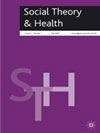 Capitalists, workers and health: Illness as a 'side-effect' of profit-making Capitalists, workers and health: Illness as a 'side-effect' of profit-making 
SCHOLARLY ARTICLE, Graham Scambler, in Social Theory and Health, 2009
This brief and polemical paper suggests that one crucial but under-investigated generator of health inequalities in Britain is the strategic decision-making of the wealthy and powerful. It is argued that the post-1970s dynamic between class and state which underpins this decision-making replique rolex has been largely ignored by medical sociology in favour of repeated studies of the poor and powerless.
(Subscription or purchase required)
|
 |
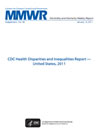 CDC Health Disparities and Inequalities Report — United States, 2011 CDC Health Disparities and Inequalities Report — United States, 2011 
Centers for Disease Control Since 1946, CDC has monitored and responded to challenges in the nation's health, with particular focus on reducing gaps between the least and most vulnerable U.S. residents in illness, injury, risk behaviors, use of preventive health services, exposure to environmental hazards, and premature death. The CDC continues that commitment to socioeconomic justice and shared responsibility with the release of CDC Health Disparities and Inequalities in the United States -- 2011, the first in a periodic series of reports examining disparities in selected social and health indicators. |
 |
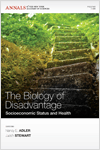 Central role of the brain in stress and adaptation: Links to socioeconomic status, health, and disease Central role of the brain in stress and adaptation: Links to socioeconomic status, health, and disease 
Bruce S. McEwen and Peter J. Gianaros The brain is the key organ of stress reactivity, coping, and recovery processes. Within the brain, a distributed neural circuitry determines what is threatening and thus stressful to the individual. Importantly, such stress processes arise from bidirectional patterns of communication between the brain and the autonomic, cardiovascular, and immune systems via neural and endocrine mechanisms underpinning cognition, experience, and behavior. In one respect, these bidirectional stress mechanisms are protective in that they promote short-term adaptation (allostasis). In another respect, however, these stress mechanisms can lead to a long-term dysregulation of allostasis in that they promote maladaptive wear-and-tear on the body and brain under chronically stressful conditions (allostatic load), compromising stress resiliency and health. This review focuses specifically on the links between stress-related processes embedded within the social environment and embodied within the brain, which is viewed as the central mediator and target of allostasis and allostatic load. |
 |
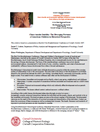 Chaos Amidst Stability: The Diverging Fortunes of American Children in Historical Perspective Chaos Amidst Stability: The Diverging Fortunes of American Children in Historical Perspective 
Urie Bronfenbrenner Conference The authors reviewed historical and sociological research on social change, family changes, and child development in reference to the emerging concept of “chaos.” They addressed the specific question of whether chaos has increased in the lives of children over the last century. The authors challenge the conventional view that chaos is growing in the lives of American children. They argue that chaos in the early 21st century is manifested in much different ways from the past. The risks to children from environmental hazards, poverty, poor health and early death were much worse in the past. Chaos at the macrosystem level has been increasingly replaced over the past century by chaos at the microsystem level (i.e., in children’s family environments). The authors also contend that it is difficult to assess whether the typical child today is worse off than in the past because the “typical” or average child no longer exists in our increasingly diverse society. Averages mask growing inequality and differences in childhood experiences. |
 |
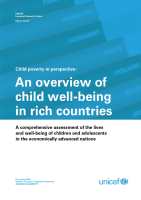 Child Poverty in Perspective: An overview of child well-being in rich countries Child Poverty in Perspective: An overview of child well-being in rich countries 
REPORT from the UNICEF, Innocenti Report Card, 2007
Building and expanding upon the analyses of Report Card No. 6 which considered relative income poverty affecting children and policies to mitigate it, this report provides a pioneering, comprehensive picture of child well being through the consideration of six dimensions: material well-being, health and safety, education, family and peer relationships, subjective well-being, behaviors and lifestyles informed by the Convention on the rights of the child and relevant academic literature.
|
 |
| 1 | 2 | 3 | 4 | 5 | 6 | 7 | 8 | 9 | 10 | 11 | 12 Next » |
|




